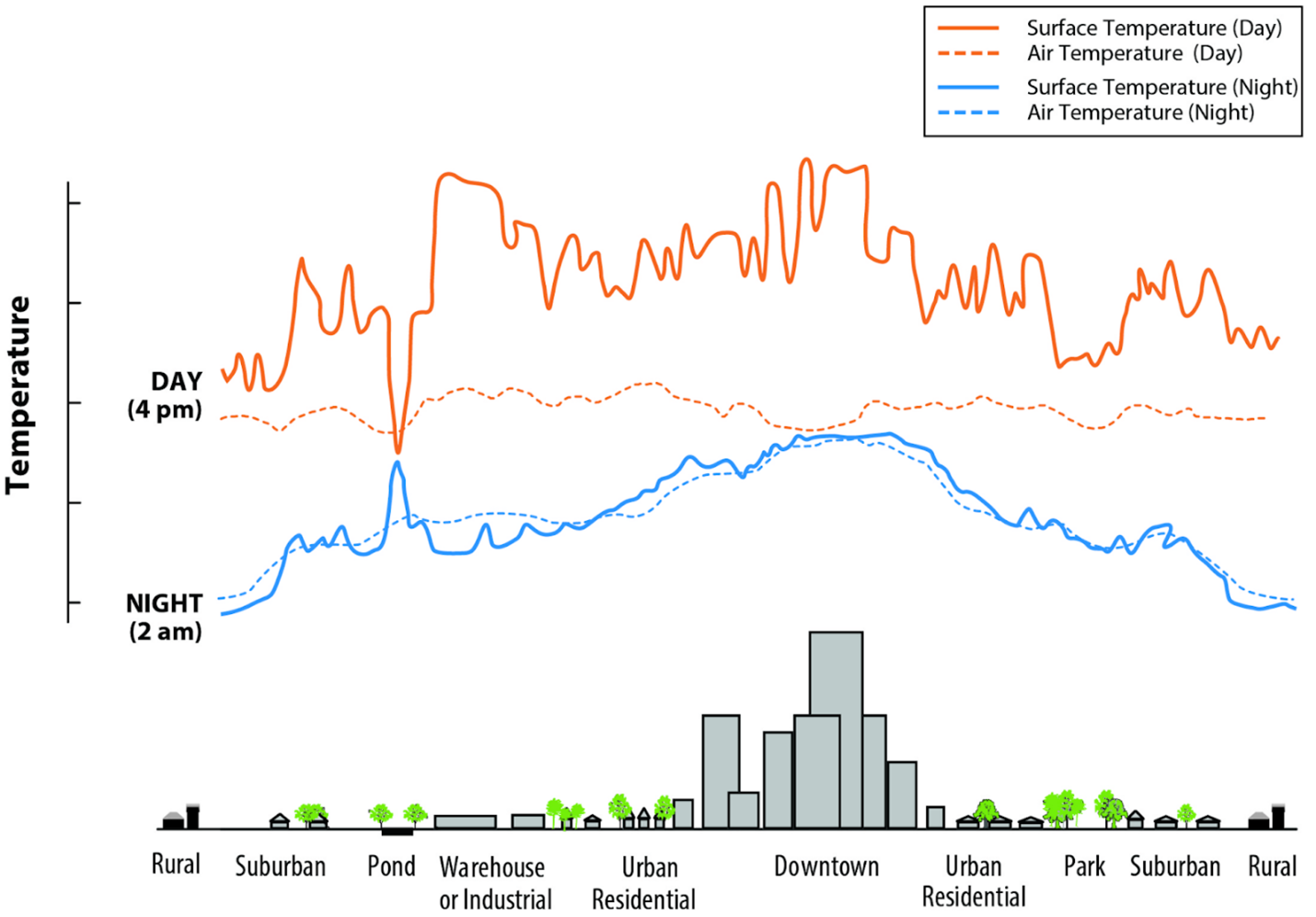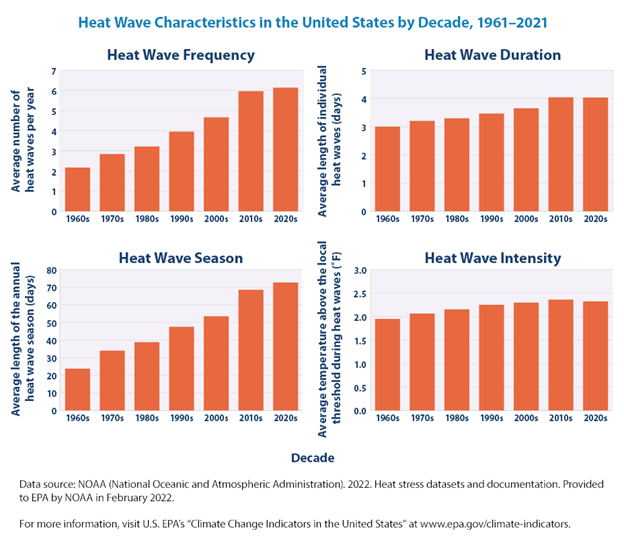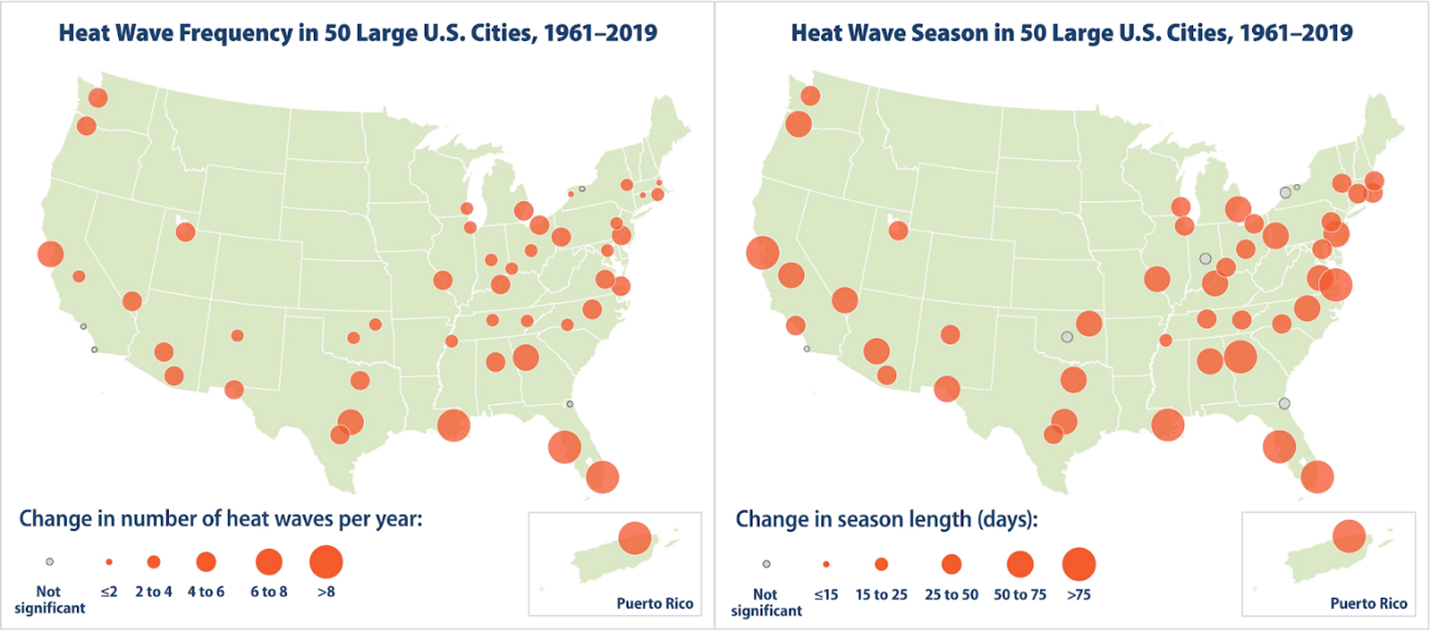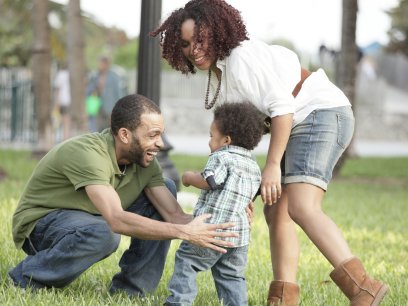
Do you live in an urban area? If so, you may be living on an “island”—not a tropical island, but an urban heat island.
A city of one million people or more can be 1.8-5.4°F hotter than its rural counterparts, and the temperature difference can be even more pronounced at night. Urban heat islands form in cities for several reasons, including:
- Higher amounts of asphalt and concrete that absorb and slowly release heat
- Lower ability to reflect solar radiation
- A lack of surface moisture
- Fewer green spaces

How Climate Change Impacts Heat Islands
Heat waves—a persistent period of unusually hot days where the apparent temperature in an area spikes above normal—can increase the amount of moisture returned to the air, slow wind speeds, and strengthen secondary air circulations.

Heat waves interact with urban heat islands to produce an effect greater than the sum of the background urban heat island effect and heat wave effect. This intensifies the difference between urban and rural temperatures and creates more heat stress in cities.
With about 80% of the US population living in cities, and extreme heat becoming more frequent over the past 20 years across the contiguous 48 states, cities are at an increased vulnerability to heat waves and a changing climate.
Data from the National Oceanic and Oceanic and Atmospheric Administration (NOAA) shows that heat waves are occurring more often than they used to in major cities across the country. While the US experienced an average of two heat waves per year during the 1960s, today that number has increased to six per year.

Health Impacts of Heat Islands
Unusually hot temperatures and heat waves are a natural part of day-to-day weather variations. However, according to the US Environmental Protection Agency (EPA), continued warming due to climate change is expected to make heat islands worse in the future.
Heat waves and heat islands are a dangerous combination that bring negative health impacts, especially for older adults, young children, people with chronic health conditions like diabetes, and people who work outside. The most serious health impacts are associated with high temperatures at night. If the human body is unable to cool down at night after a hot day, the heart pumps harder trying to regulate body temperature.
Abrupt and dramatic temperature increases can be very dangerous. Death rates can rise during and after heat waves due to:
- Heat stroke and related conditions
- Cardiovascular disease
- Respiratory disease
- Cerebrovascular disease (disorders that prevent the brain from getting enough oxygen)
- Interested in learning more about the health impacts of climate change? NEEF's Environmental Health Webinar Series offers valuable information on the health impacts of climate change.
Heat Islands and Environmental Equity
Scientific evidence shows that low-income areas and communities of color are disproportionately exposed to heat islands due to historic redlining, a now-illegal practice. These populations are at greater risk from the negative health impacts of extreme heat due to long-standing inequities. For example, asthma is more common among Black, Hispanic, and Indigenous Americans, putting these groups at greater health risk from hotter temperatures and air pollution.
Additionally, about one-third of US households struggle with the financial burden of cooling or heating their homes. Low-income households tend to live in less energy-efficient homes that are more expensive to keep cool. Energy insecurity makes it harder to stay safe and healthy during heat waves.
How Cities Are Adapting to Extreme Heat
As heat islands continue to impact cities, communities can take action to help reduce their residents’ vulnerability to heat. The first step is for local governments to develop a comprehensive heat response plan, which focuses on forecasting, education, and specific heat wave response strategies. Other actions cities can take during a heat wave include:
- Providing community cooling centers
- Communicating heat warning information and recommended actions, like staying indoors
- Encouraging energy conservation
Nature-based solutions (also sometimes referred to as “green infrastructure”) are another way that communities can adapt to climate hazards like extreme heat. Some common types of green infrastructure that can address heat islands include installing green roofs on buildings and planting trees to cool down urban neighborhoods.
How You Can Prepare for the Next Heat Wave
Want to learn more about how to protect yourself and your community during the next heat wave? Here are some suggestions:
- Learn how to reduce heat islands near you, including increasing shade around your home and using energy-efficient appliances.
- Visit the CDC Heat & Health Tracker to explore current weather conditions near you and learn how extreme heat affects your county.
- Check on your friends, family, and neighbors during hot days to ensure they have access to air conditioning or cooling centers.
- Follow NEEF’s SunWise guide and the EPA’s tips to keep cool. On hot days, stay out of the direct sun and wear sunscreen. Never leave people or pets alone in a hot car. Limit outdoor activity and spend time in cool places like a shopping mall, library, or movie theater.
Call 911 if you suspect that you or a loved one may be experiencing heat-related stress, exhaustion, or stroke.


